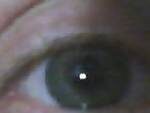“You pilot a motorbike with your eyes, Bento’s Sketchbook says. All things for John always came back to ways of seeing, his eternal recurrence. Ways of riding are really ways of seeing, and ways of drawing. “For many years I’ve been fascinated by a certain parallel between the act of piloting a bike and the act of drawing. The parallel fascinates me because it may reveal a secret. About what? About displacement and vision. Looking brings closer.”
John Berger obituary (The Guardian)
“Susan Sontag once described Berger as peerless in his ability to make “attentiveness to the sensual world” meet “imperatives of conscience”. Jarvis Cocker, to mark a recent book of essays about Berger, said: “There are a few authors that can change the way you look at the world through their writing and John Berger is one of them.”
John Berger obituary (New York Times)
“Mr. Berger’s intention was to upend what he saw as centuries of elitist critical tradition that evaluated artworks mostly formally, ignoring their social and political context, and the series came to be seen as an assault on the historian Kenneth Clark’s lofty “Civilisation,” the landmark 1969 BBC series about the glories of Western art.”
– – – – – –
John Berger was an art critic and a novelist. He won the prestigious Mann Booker Prize in 1972.
Below is an excerpt from John Berger’s Mann Booker acceptance speech. I have excerpted this part because it connects his arguments from “Ways of Seeing” to themes we’ll be exploring in Unit 3:
“Before the slave trade began, before the European de-humanised himself, before he clenched himself on his own violence, there must have been a moment when black and white approached each other with the amazement of potential equals. The moment passed. And henceforth the world was divided between potential slaves and potential slavemasters. And the European carried this mentality back into his own society. It became part of his way of seeing everything.
The novelist is concerned with the interaction between individual and historical destiny. The historical destiny of our time is becoming clear. The oppressed are breaking through the wall of silence which was built into their minds by their oppressors. And in their struggle against exploitation and neo-colonialism – but only through and by virtue of the common struggle – it is possible for the descendants of the slave and the slave master to approach each other again with the amazed hope of potential equals.
This is why I intend to share the prize with those West Indians in and from the Caribbean who are fighting to put an end to their exploitation. The London-based Black Panther movement has arisen out of the bones of what Bookers and other companies have created in the Caribbean; I want to share this prize with the Black Panther movement because they resist both as black people and workers the further exploitation of the oppressed. And because, through their Black People’s Information Centre, they have links with the struggle in Guyana, the seat of Booker McConnell’s wealth, in Trinidad and throughout the Caribbean: the struggle whose aim is to expropriate all such enterprises.”
– – – –
Below is a link to a Jacobin article that makes connections between one of Berger’s arguments in Ways of Seeing and the mechanically reproduced image of the instagram selfie. You might think about how the cellphone camera changes or complicates what Berger argues about photographic reproduction of images using cameras as well as what he says about power and influence in terms of who controls the “means of production” (or reproduction)–who controls how images are created and reproduced:


